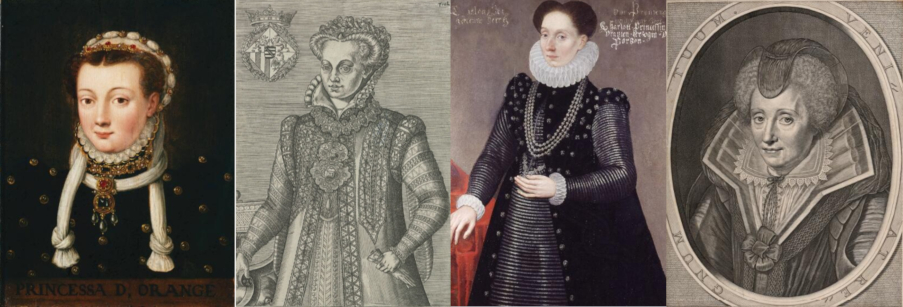Visitors to the home page of EMLO will glimpse today portraits of three sixteenth-century women arranged in the ‘featured catalogues’ niches. The portraits will change at intervals through the day to showcase four in total. These are the wives of William of Orange (1533–1584) and publication of their correspondences in EMLO is celebrated this afternoon at the Museum Prinsenhof Delft.
The inventories of the correspondences of the four women have been collated as part of the ‘Epistolary Power: the Correspondence of the wives of William of Orange, 1552–1617, and of the wives of the Dutch and Frisian Stadtholders, 1605–1725‘ project, headed by Dr Ineke Huysman of the Huygens ING. With assistance from Annashireen Eslamimoghaddam and a contribution of metadata (for the correspondence of Anna von Sachsen) by Femke Deen, the letters have been described in EMLO and linked to images at the Koninklijke Verzamelingen, The Hague, where the majority of the manuscripts are conserved.
The launch of the letters in EMLO is being marked during the opening of a specially curated exhibition ‘Historische vrouwen. Vrouwen rondom Willem van Oranje en vrouwen van nu [Historical women. Women around William of Orange and women today]’ at the Museum Prinsenhof Delft, which may be visited until 20 February 2022. The celebratory event will be live-streamed and includes a short presentation on Early Modern Letters Online and Women’s Early Modern Letters Online.
In EMLO, the correspondences for each of William’s wives may be viewed separately: Anna van Egmond (1533–1558); Anna von Sachsen (1544–1577)—whose misfortunes gave rise to a tragic and lonely death; Charlotte de Bourbon (1546/7–1582)—who nursed William back to health from an assassination attempt in 1582; and Louise de Coligny (1555–1620)—who, with their young son, witnessed William’s murder in 1584. The four correspondences may be viewed also as a discrete collection or together with the correspondences of the seventeenth-century Stadtholders’ wives. As the presentation explains, these letters may, in turn, be viewed within the context of WEMLO, and of course this rapidly growing dataset of early modern women’s letters may be explored against the backdrop of the whole of EMLO. It is thanks to the hard work and collective endeavour of our wonderful network of scholars, students, archivists, interns, volunteers, and projects that that the voices of so many early modern women are finally beginning to emerge. Enjoy the celebrations!

